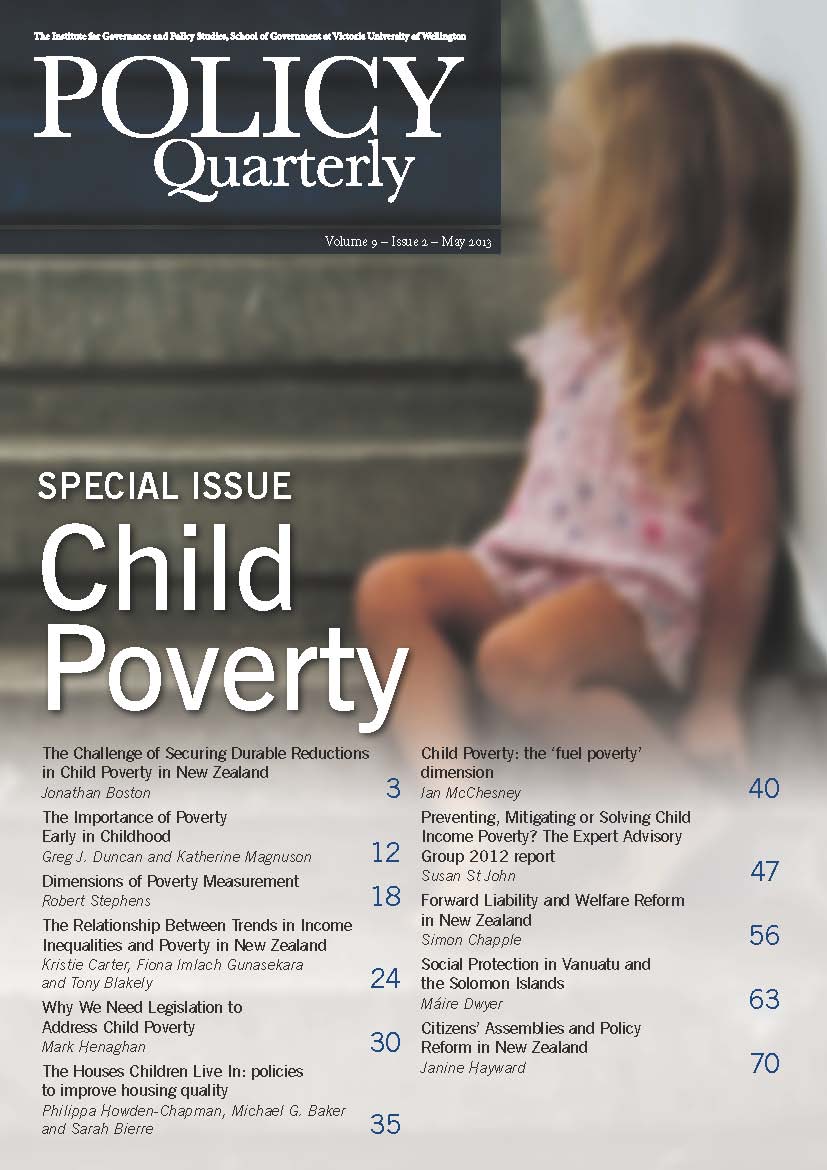Child poverty: the ‘fuel poverty’ dimension
DOI:
https://doi.org/10.26686/pq.v9i2.4444Keywords:
affordability of energy services, damp and cold houses, energy deprivation, Warm Up New Zealand, Heat Smart programme, Community Energy Action Charitable Trust (CEA)Abstract
"Children … spoke about damp and cold houses affecting their health, and wanted rental properties to be safer and healthier. They noted that more insulation of homes would make heating homes more affordable, as they reported that families are struggling to pay household bills, which leads to no heating, no water, and the inability to cook." (Expert Advisory Group on Solutions to Child Poverty, 2012) Fuel poverty can be broadly described as the inability of a household to afford a sufficient level of energy services in the home. Energy services are the things people need and desire from their use of energy, such as warm and comfortable rooms, hot water, lighting, and cooked food. Having a sufficiency of energy services is widely accepted as indispensable to modern living and peoples’ quality of life, while a state of energy deprivation can have an adverse impact on physical and mental health, well-being and social functioning (Boardman, 1991; Pantazis, Gordon and Townsend, 2006).
Downloads
Downloads
Published
Issue
Section
License
Permission: In the interest of promoting debate and wider dissemination, the IGPS encourages use of all or part of the articles appearing in PQ, where there is no element of commercial gain. Appropriate acknowledgement of both author and source should be made in all cases. Please direct requests for permission to reprint articles from this publication to Policy-Quarterly@vuw.ac.nz.



